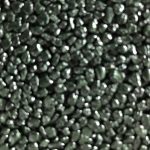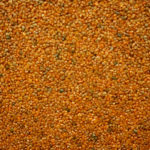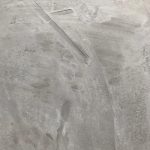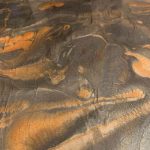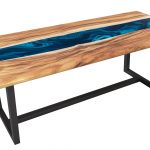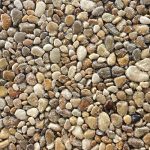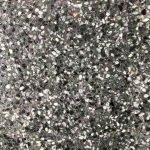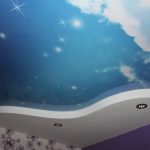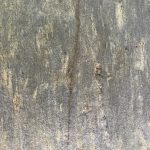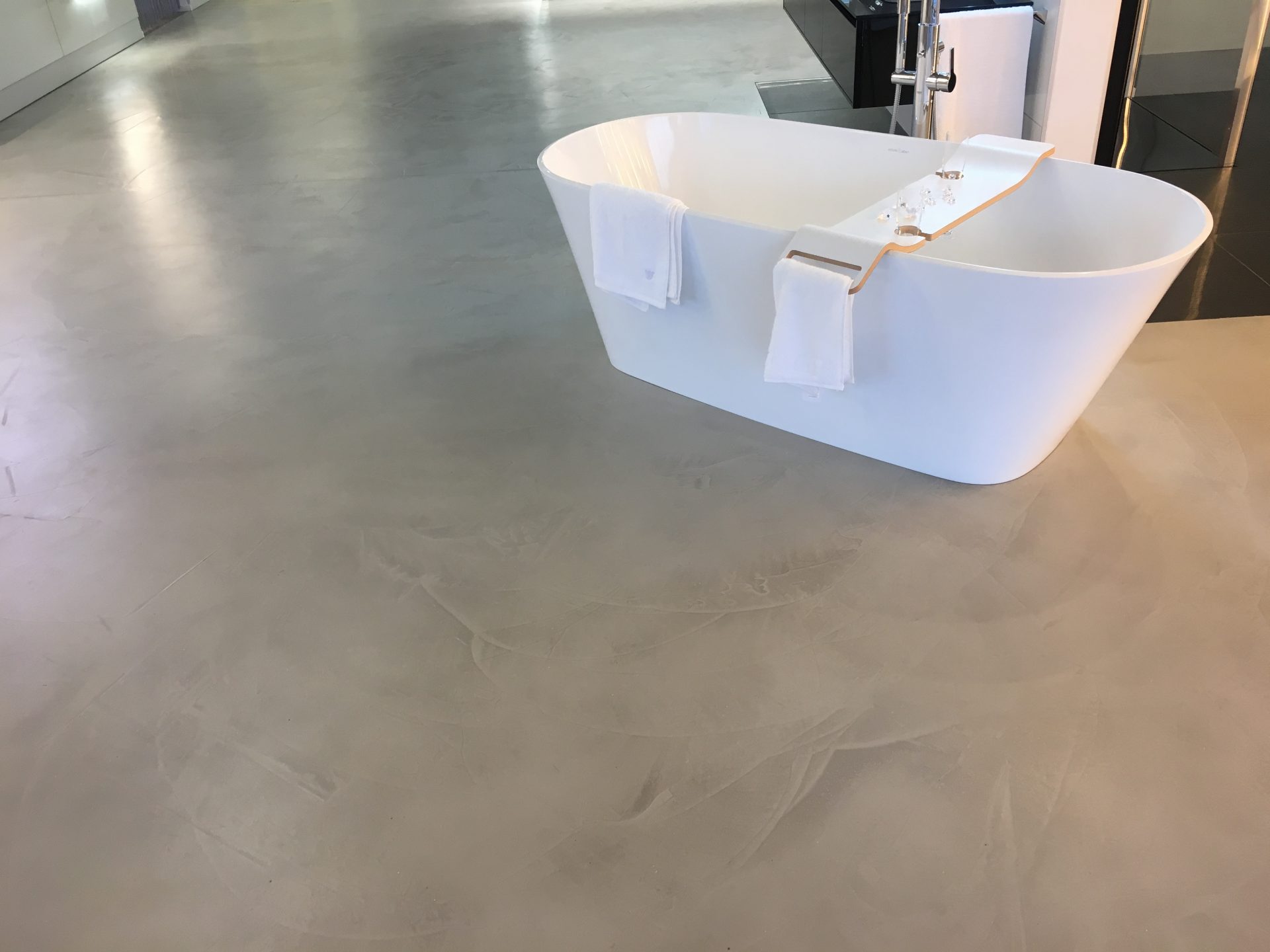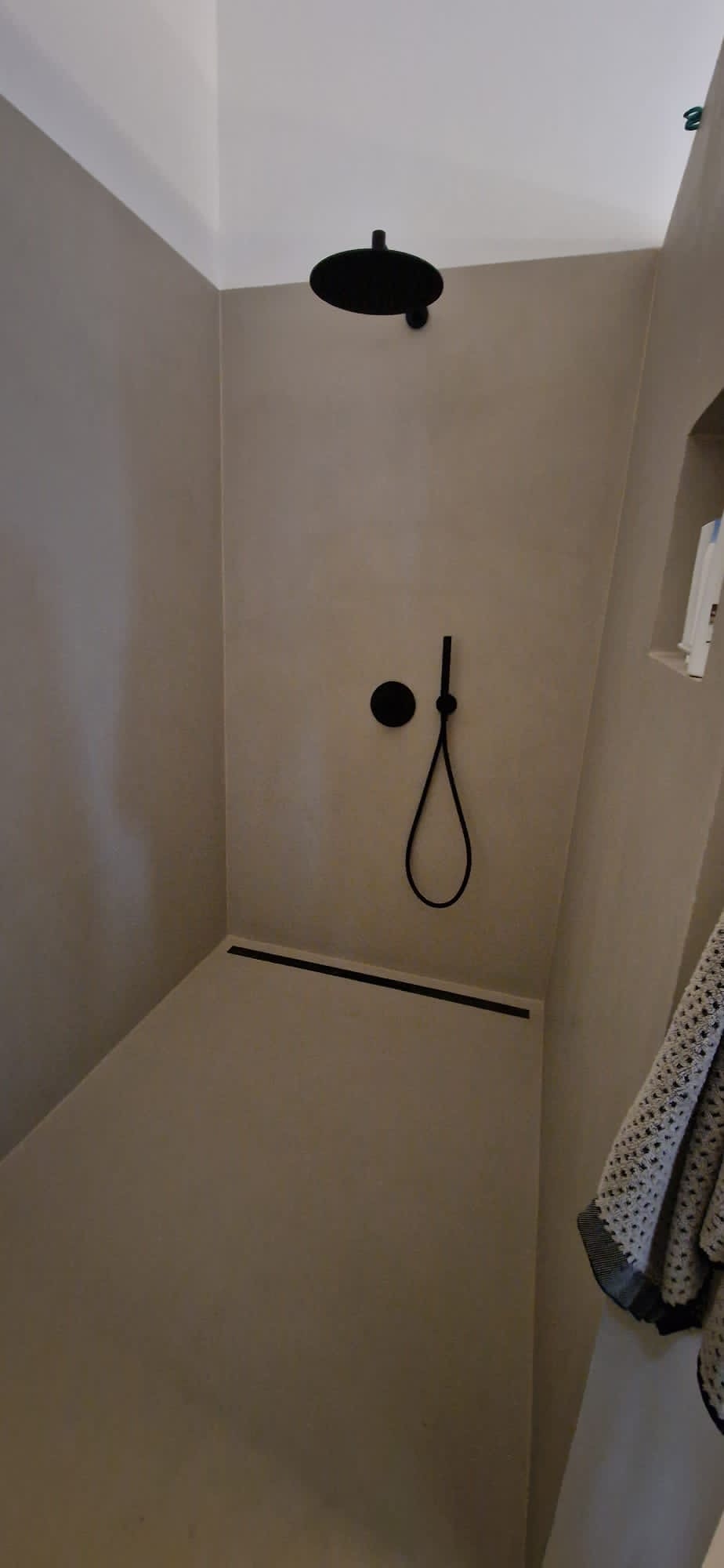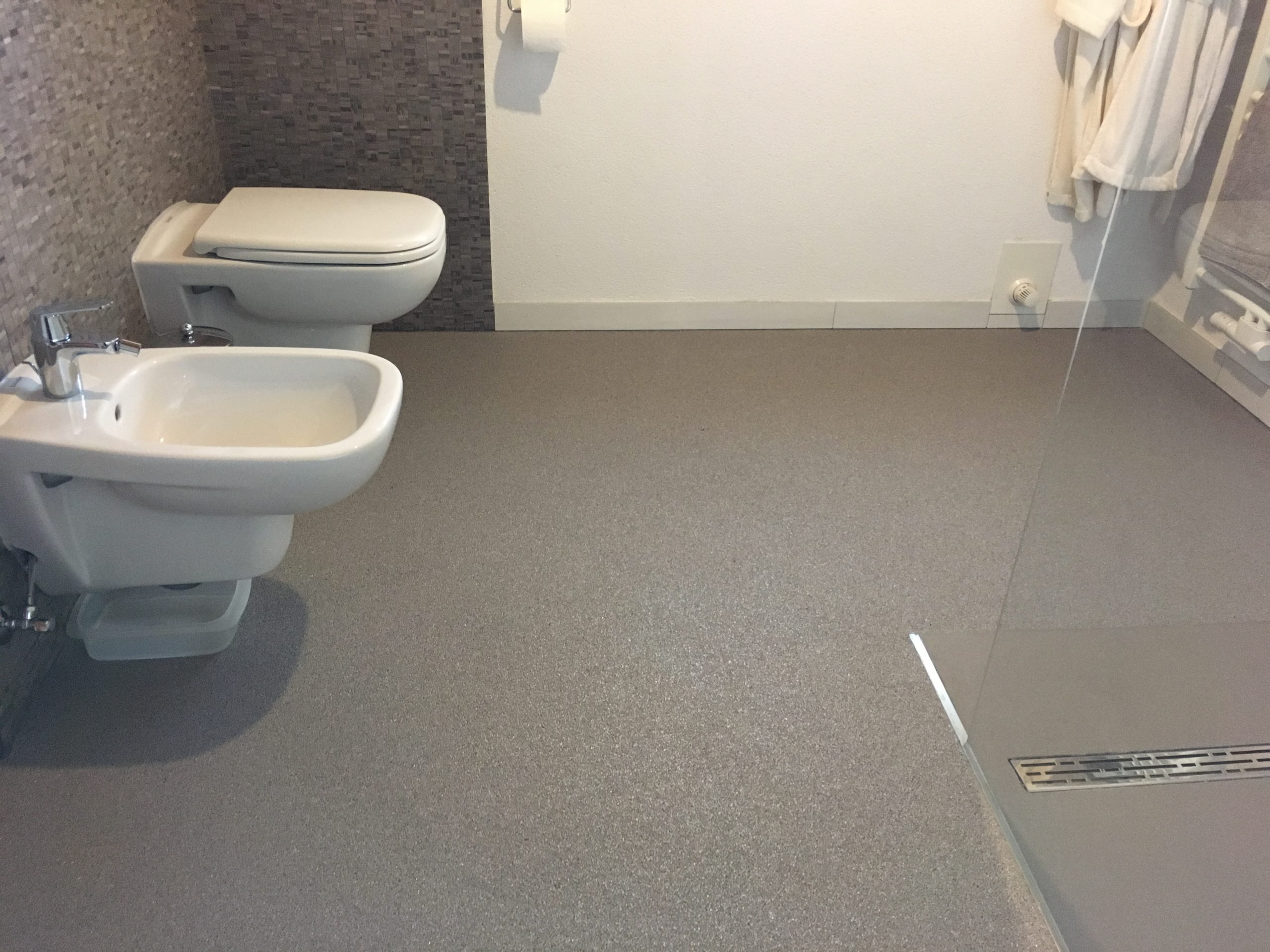Most of the articles worth knowing are about creating horizontal surfaces with Stone carpet. However, in addition to laying floors, it is also possible to cover vertical surfaces such as skirting boards, risers and walls and offers many advantages. Find out here what these advantages are and how the stone carpet is applied to the wall in the first place.
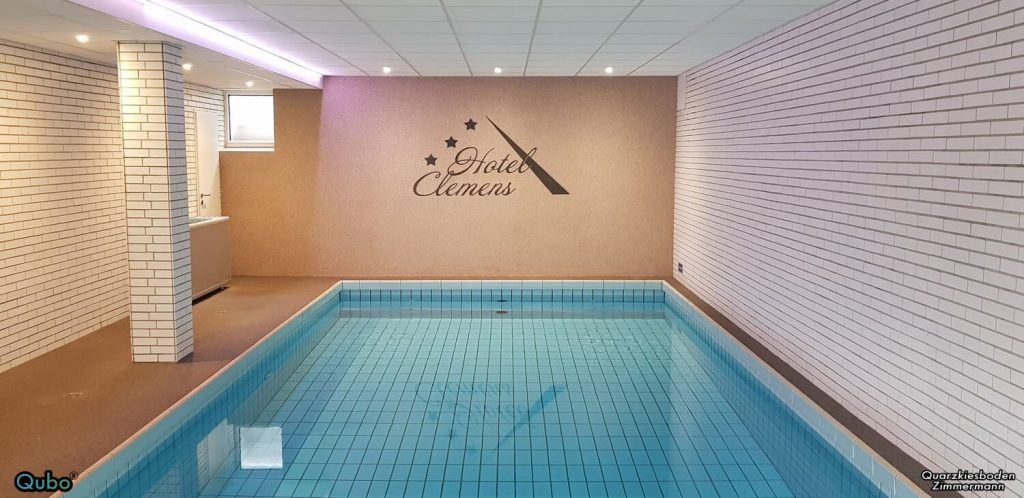
Why a stone carpet wall?
What are the advantages of a stone carpet wall?
Wallpaper and plaster walls are the most common types of wall covering. The former trend of using tapestries for design purposes offered not only visual variety but also the advantages of easier maintenance and soundproofing in large, open rooms. This trend has since waned and tapestries are now rarely seen. Today, they often look old-fashioned and outdated.
With stone carpet, you get the benefits of a tapestry without having to hang up grandma’s old Berber. The stone carpet owes its name to the appearance of its surface: although it is made of gravel, the structure of the compacted stones not only gives it the appearance of a carpet. It also reduces the spread of sound compared to completely smooth floor systems. Added to this are the durability, the easy-care surface and the design freedom of stone flooring. But how is it possible to lay stone carpet on vertical surfaces?
Use of a special binding agent for the stone carpet wall design
Choosing the right binder for stone carpet walls
The trick to covering walls with stone carpet lies in the special binder. This one-component polyurethane-based wall coating not only ensures the necessary stability of the filler, it also provides optimum protection against UV influences.
Safety and durability are generally an issue with wall coatings: Everyone is familiar with the situation of moving into a newly renovated apartment and coming up against the freshly plastered and painted wall with an unwieldy piece of furniture. The result is an annoying scratch that – no matter how inconspicuous – will always be visible to the person who caused it. But damage such as corners coming loose or scratch marks from pets on wallpaper, which normally occur over time, are also annoying.
As vertical coatings are made from the same materials as the flooring version, it is naturally just as robust, durable and seamless on the wall. Impacts, claws and relocations cannot harm the gravel, so the wall coating retains its flawless appearance in the long term.
Stone carpet optics
Wall design options with Qubo® Painting
With the extensive design options offered by stone carpet, there is hardly anything left to be desired when designing your own four walls. In addition to the large selection of colors, stone carpet allows you to create complex patterns, wall paintings and airbrush motifs – so-called Qubo® Painting – and allows you to create a new feel-good ambience according to your preferences. The gravel coating is therefore the ideal alternative to tiles or wall paneling: No dangers from cracked joints, broken tiles or scraped areas.
This also qualifies stone carpet walls for use in the hospitality and commercial sectors: show customers and visitors your company in the form of color-coordinated, robust walls with logos and create an eye-catching effect.
Stone carpet care
Walls just as easy to clean as floors
In addition to their attractive appearance and stability, stone carpet wall coverings are also easy to maintain. Stains of all kinds can be easily removed with water and a brush. They therefore offer the perfect splash protection indoors, for example in the kitchen by the stove, in the bathroom, as pool surrounds or in stairwells.
In outdoor areas, they are used on the exterior walls of private and commercial buildings. This saves you the time-consuming renovation of worn or heavily soiled patio, staircase and house plinths. With a stone carpet wall design, you can confidently dispense with constant painting and plastering.
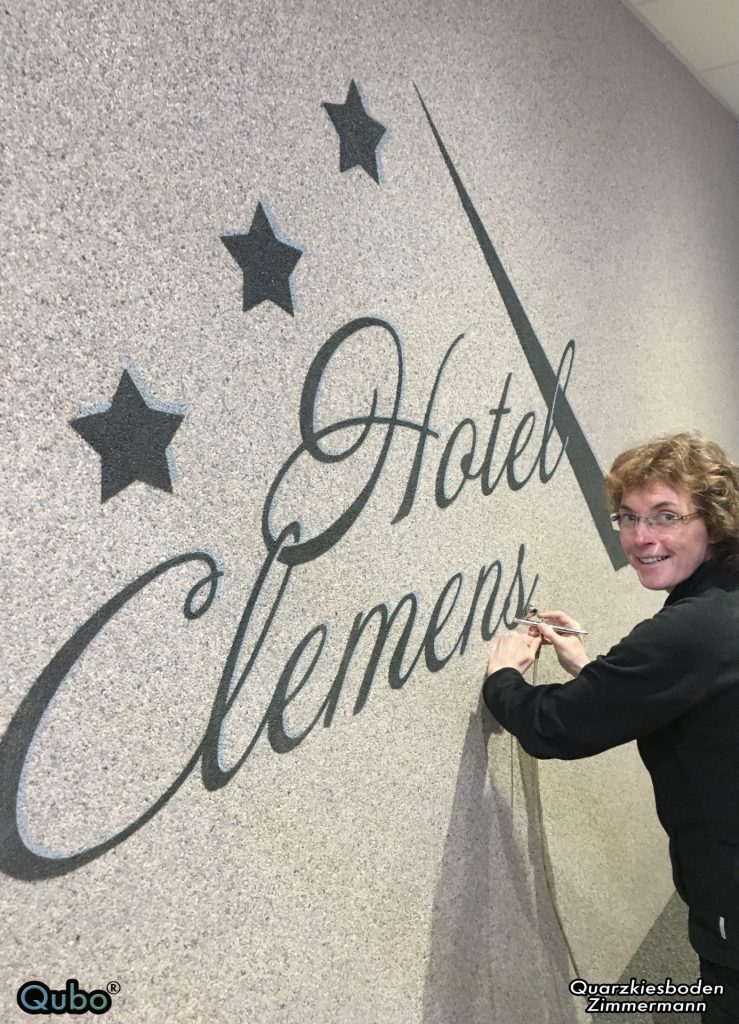
Vertical surfaces require skill and experience
Before applying gravel to vertical surfaces such as house walls outdoors, the correct preparatory steps should be taken. This includes removing dust and loose particles from the substrate. The substrate should always be dry before laying. Furthermore, any leaks should be protected against moisture and sealed by a specialist. A primer ensures good adhesion of the material to the wall.
The subsequent vertical laying of the filler requires some skill and experience. Even creating risers and skirting boards is not trivial, and for higher surfaces it is important to ensure that the thickness of the gravel layer is uniform at a maximum of 6 mm. The finished mixture of gravel and the single-component binder can be processed differently depending on the prevailing temperature: While a working time of 30-45 minutes can be expected at 18-22°C, at higher temperatures work must be carried out more quickly and the mixture must be thickened further in some cases.
With a great deal of experience in creating vertical surfaces, very special projects are also possible, such as the steep curve at Audi in Stuttgart, which we were involved in creating as specialists.
As you can see: From skirting boards and risers to splashbacks on the stove and exterior walls or special projects such as pool surrounds and vehicle displays, there are many options for stone carpet wall design and they are the ideal complement to stone carpet flooring. Do you already have ideas for your project? Then start planning with us at and thus ensure …
… for a strong appearance!
First and foremost, the area of application determines the pricing. However, the cost of a stone carpet depends on many different factors, including
- the type of binder required
-
from the primer
-
the choice of skirting boards, for example, if these are also made of gravel
-
from the labor costs of the professional installer
-
the size of the area to be laid
In outdoor areas, the costs are higher because the substrate needs to be sealed and the marble gravel needs to be laid with a UV-resistant binder.
First and foremost, the area of application determines the pricing. For example, you can have a stone carpet laid indoors for around €100 per m². However, the costs depend on many different factors, including
- the type of binder required
-
from the primer
-
the choice of skirting boards, for example if these are also made of quartz gravel
-
from the labor costs of the professional installer
-
the size of the area to be laid
In outdoor areas, the costs are higher because the substrate needs to be sealed and the marble gravel needs to be laid with a UV-resistant binder.
In most cases, coloured quartz or marble gravel is used for the production of stone carpets. However, there are considerable differences in quality here, for example in the proportion of dust in the material or in the types of marble used. Mica additives and various precious and semi-precious stones can be added, but this is another cost factor.
Colored quartz is available in the following grain sizes:
-
1–2 mm
-
2–3 mm
- 3–4 mm
Marble gravel is available in the following grain sizes:
-
1–4 mm
-
4–8 mm
- 8–15 mm
Of course, the choice of gravel grain size has an effect on the laying thickness of the gravel floor.
The laying thickness of the floor depends on the gravel grain size and the area of application. Normal gravel with a grain size of 2 – 3 mm can be laid indoors with a thickness of 6 mm.
An installation thickness of 8 mm is used outdoors and on stairs indoors due to the load.
Finally, 10 mm of material is applied to external stairs.
Vertical surfaces such as risers, skirting boards and walls are always laid in 6 mm.
The larger the grain size of the gravel, the higher the installation height of the floor covering. This means that more gravel and additional binder is required per m². The price increases accordingly.
The primer forms the bonding bridge between the building structure and the gravel floor. The material can be applied to almost any substrate, for example tiles, wood, stone, concrete and metal. Different substrates require different preparation steps.
On tiles and metal, for example, a primer is required to give the smooth surface stability during installation.
On porous stone and absorbent screed, the appropriate primer must be used to prevent the binder from being absorbed, which is intended to ensure that the pebbles remain in place.
To coat wooden planks with a gravel floor, the movement of the planks against each other must first be stopped. To do this, the installer first applies a mesh mat to the wooden floor. Once the filler has dried, the gravel floor is applied.
For reasons of hygiene, the stone carpet should be fitted with a pore seal, especially in kitchens and bathrooms. It prevents leaked, sticky liquids from penetrating the gravel floor. While it is difficult to remove liquids that have penetrated an open floor, the pore seal enables effortless cleaning by wet mopping.
Dogs, cats and co. feel much more comfortable on the textured surface of a gravel floor than on smooth floor coverings such as tiles or laminate, as they do not slip on stone carpets. However, it is advisable to cover the floor with a pore seal to ensure an easily wipeable surface.
-
High drainage capacity due to open-pored structure
-
Quick drying in sun and wind
-
Easy to clean and self-cleaning
-
100% frostsicher
-
UV-stabil
- Gentle, massage-like walking comfort when walking barefoot
The most important thing when laying gravel floors in outdoor areas is preparing the substrate. This ensures the durability of the finished floor.
On the one hand, this is because a primed subfloor provides significantly increased adhesion for the filled gravel. On the other hand, a sealing layer keeps rainwater away from the building structure, for example, which supports long-term durability.
Options for sealing building structures are
- Sealing using an epoxy resin seal with sealing membrane
- Sealing using a flex sealing slurry
In order to drain rainwater effectively, the floor covering is laid with a gradient of at least 1.5%.
No, in outdoor areas, the stone carpet is always laid as an open system to ensure drainage capacity and thus the drainage of rainwater. This makes them 100% frost-proof and therefore ideal as pool surrounds and as a covering for balconies, terraces, entrance areas, outdoor steps and loggias.
We would like to point out that we do not recommend stone carpets in the direct shower area. The reasons for this can be found in the basic structure of the floor and the wet room. Just as the tile adhesive under a tile does not form a completely flat surface without air pockets, pores also remain underneath a sealed stone carpet.
If, after years, a silicone seam leaks and water from a fitting, for example, penetrates between the wall or floor covering and the seal of the building structure, the transparent pore seal reacts with the water and forms white stains. As these occur underneath the seal, they cannot be wiped away or removed by drying.
This is why insurance companies do not classify stone carpets as suitable for wet rooms and do not replace such coatings in the event of damage. We therefore recommend microcement coatings for showers. With these, there is no water-bearing layer between the floor covering and the substrate, so there is no risk of moisture penetration. Due to the many customization options for microcement, it can also be combined with stone carpeting. Just get in touch with us.
Yes. A staircase coated with stone carpet already has a slip resistance class of R10 after installation.
Special sealants can be used to increase the slip resistance class to R11 or R12.
Depending on the design of the staircase, the renovation takes 3-5 days. In special cases, installation is also possible within an even shorter time. For a more precise determination of the duration of your construction project , simply contact us at.
All our gravel floors use natural stones as the base material. This is why many people also refer to stone carpeting as natural stone carpeting.
The gravel is available natural and colored.
FAQ
Details and facts, key figures and explanations – here you will find answers to frequently asked questions about our Qubo® coating systems. If any details remain unclear, simply contact us. We will be happy to advise you personally and promptly.

